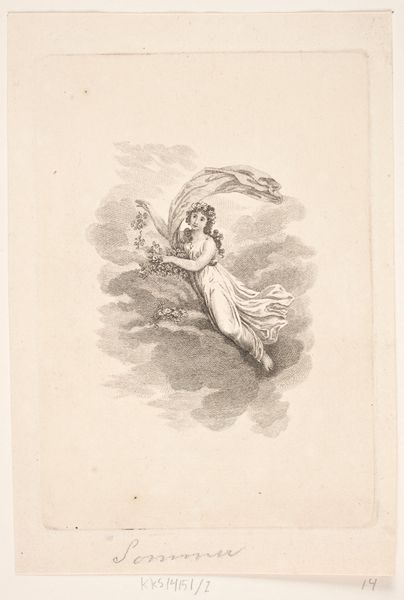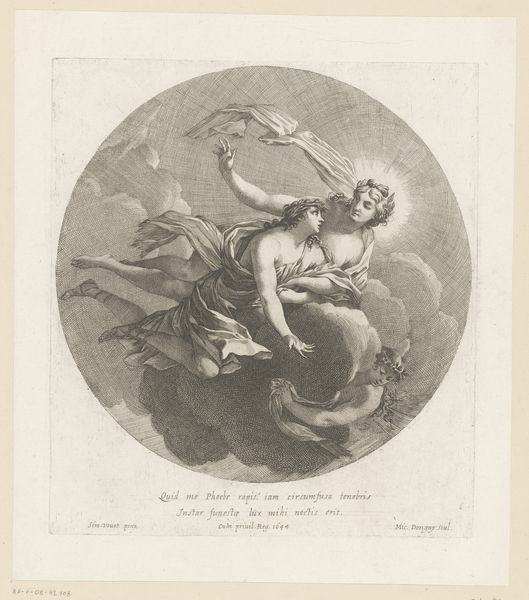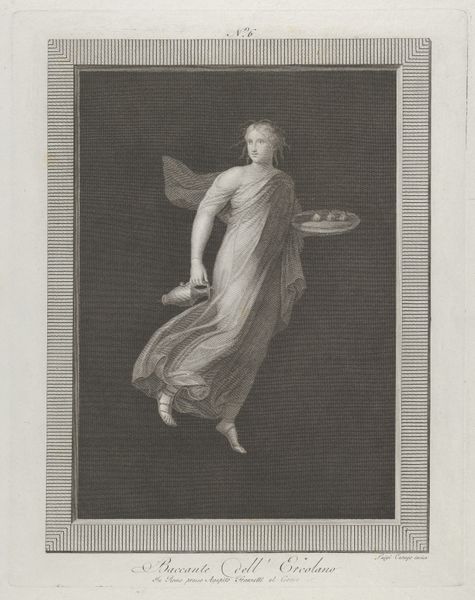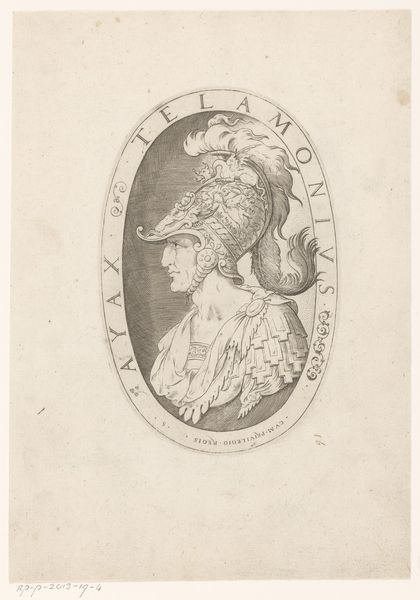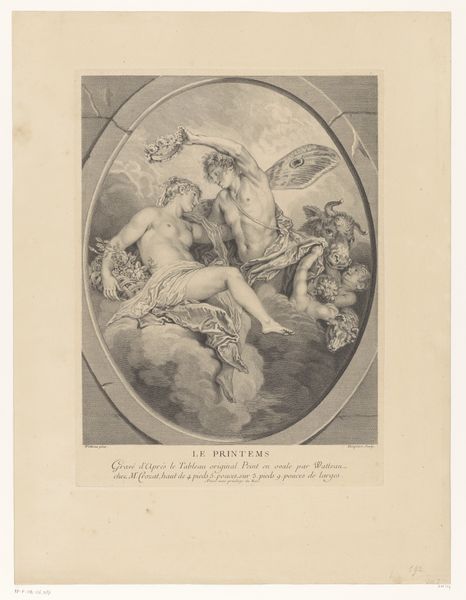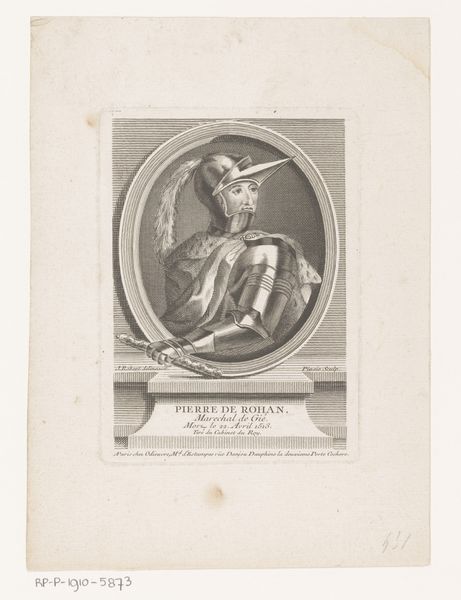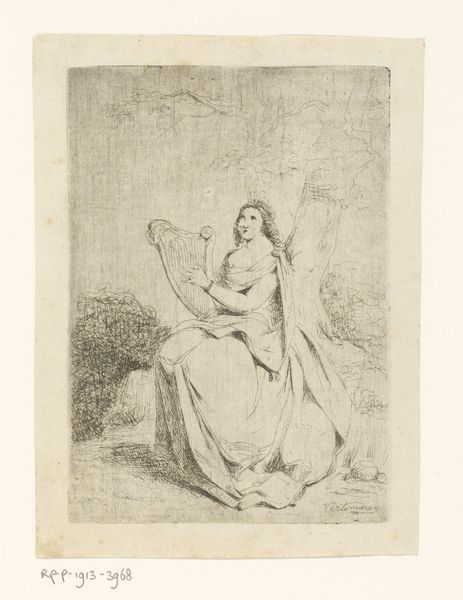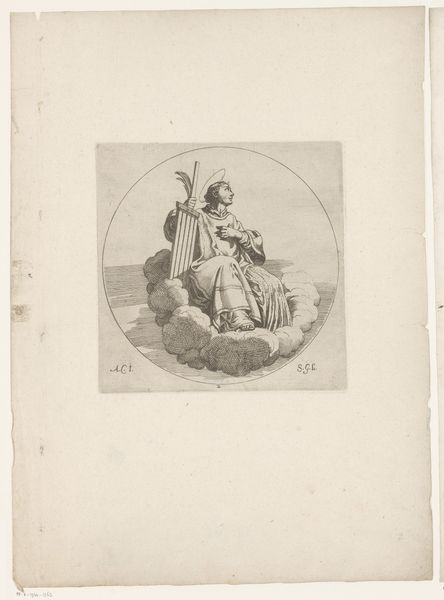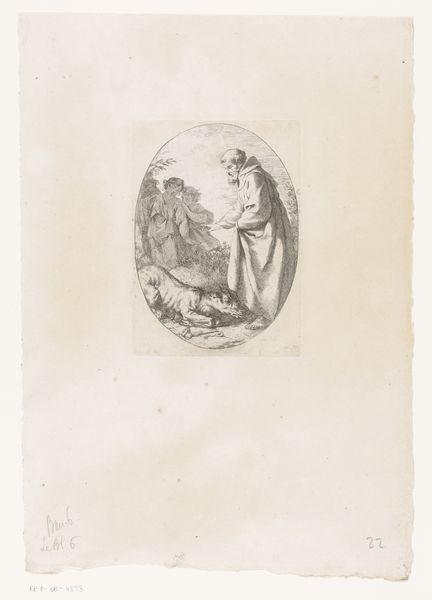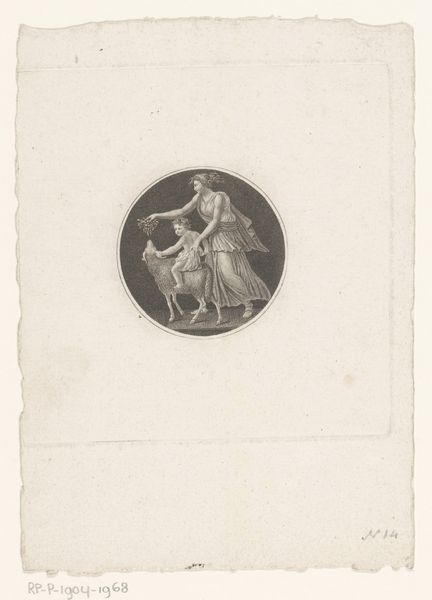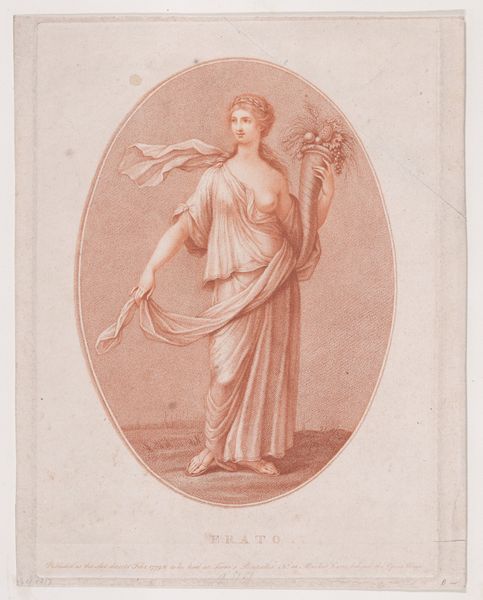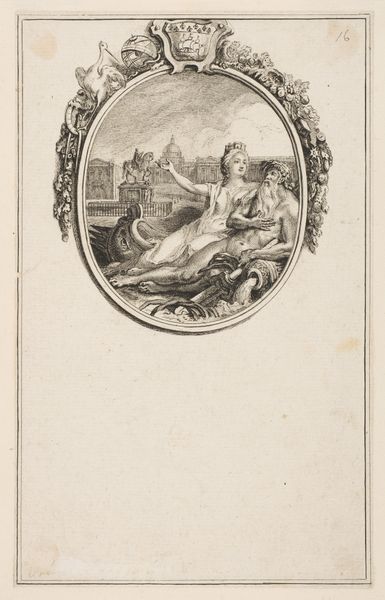
drawing, print, etching
#
drawing
#
neoclassicism
# print
#
etching
#
classical-realism
#
figuration
#
history-painting
Dimensions: 63 mm (None) x 58 mm (None) (billedmaal), 75 mm (height) x 70 mm (width) (plademaal)
Curator: Let’s turn our attention to this etching, "Sphinx Seated on a Vase," crafted by Andreas Flint sometime between 1767 and 1824. Editor: My first impression is one of stark elegance. The stark contrast of light and shadow within the circular frame gives it a sense of drama and contained power, wouldn’t you say? Curator: Indeed. Sphinxes, historically, have held immense symbolic weight across cultures—particularly ancient Greece and Egypt. Given the Neoclassical style here, we see a deliberate referencing and reinterpretation of that historical power structure. Notice how the figure is poised atop the vase. This raises intriguing questions of power dynamics and feminine representation in the late 18th and early 19th centuries, given societal expectations about female sexuality and intellectual prowess. Editor: Absolutely. The vase itself becomes a potent symbol. Is it supporting her, or is she weighing it down? What does the choice of positioning this hybrid creature, so associated with riddles and gatekeeping, upon an ancient form like this evoke about cultural memory? I keep returning to those wings; so carefully etched and defined. It reminds me of similar visual codes from Antiquity. Curator: The layering of classical motifs is deliberate. Flint, through the etching medium, creates a dialogue between reason and mythology that defines this period. Consider how Neoclassicism, while appearing to revive classical forms, subtly reshapes them to reflect contemporary socio-political concerns. The Sphinx itself becomes a vessel for those anxieties and aspirations. Who are those cultural gatekeepers then? Editor: Precisely! Are they challenging or perpetuating norms? The riddle, unanswered, remains resonant. Looking closely, the way Flint plays with light and shadow gives the creature an almost unsettling realistic presence, very typical for the art movement it belongs to, and draws out so many more layers of significance. Curator: It truly becomes a mirror, reflecting both historical fascinations and contemporary social debates. Examining it, from a contemporary, intersectional perspective prompts a more profound understanding of historical power imbalances. Editor: Indeed, analyzing artistic continuity through the image and symbols provides access to the visual and cultural heritage that connects us to the past and gives us better grounds for discussing the present. Curator: Absolutely, an artwork brimming with historical echoes and contemporary implications, leaving us all with a few more riddles, doesn’t it? Editor: Exactly.
Comments
No comments
Be the first to comment and join the conversation on the ultimate creative platform.

